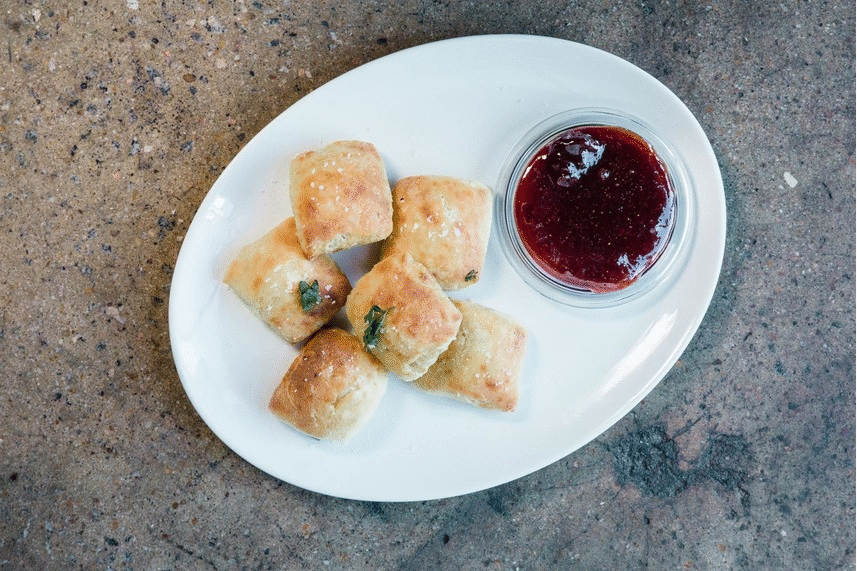ENC-Style Buttermilk Biscuits
Traditional Eastern North Carolina Biscuits are different. Not poofed up in a zillion layers or bready, they're flat under a timid dome, crispy on the bottom, and porky-smelling. Because my mom baked high-rising canned biscuits, I thought the squat biscuits I ate at Byrd's diner, the B&S Cafe, and th Tyndall Family Restaurant, and Pleasant Hill Grocery were baked only in restaurants... till I met Lillie Hardy, my friend and home cook mentor.
Lillie gave me a lesson on biscuit making, and beforehand I thought she was showing me something I already knew - how to measure, gently knead, roll out, and cut big fluffy biscuits. Instead, she showed me how to fashion the biscuits that I had thought only a scowling magician toiling hunchbacked behind a swinging kitchen door could craft.
Because these are flat, they don't make great bookends for stout combinations like bacon, egg, and cheese or the very popular fried-chicken biscuits with pickles I keep seeing on menus. This is a one-stuffing kind of biscuit, a happy home for a link of sausage split lengthwise or a naturally slight slice of country ham. Lillie and most people around, though, eat them just as often right out of the oven with molasses.
The instructions make them seem easier than they actually are. Don't think you're going to wake up hungry Saturday morning and whip out a perfect batch of these biscuits the first time you try; you'd better have a plan B. It takes practice. At least it did for me.
— Vivian Howard, Deep Run Roots
Lillie and Vivian hosting a biscuit-making workshop at VHQ
Ingredients
1/2 cup Lard plus more for greasing the pan
2 1/2 cups all-purpose flour
4 teaspoons baking powder
2/3 teaspoon salt
1 cup buttermilk
Instructions
Preheat your oven to 375 degrees. Using your hand as both a scoop and spatula, grease a baking sheet liberally with lard.
Sift the flour, salt, and baking powder into a large bowl and make a deep and wide well in the center. Add 1/2 cup lard followed by buttermilk, taking care to keep both contained in the well for now. If you're right-handed, take your right hand down into the lard-buttermilk goop and start bringing that together with your fingers. You want to make that as much a homogenous mixture as you can without bringing too much flour into the fold just yet. Once you get it together, start moving the wet mixture back and forth, to and fro in the flour. Turn it over and do the same. Turn it over again and introduce more flour with each movement. Once I get it going, I like to do a little motion that feels like a one-handed knead, using my thumb as if it were the other hand. It's all real gentle, but it pushes new flour in with each movement. continue introducing flour until the dough is not sticky but still very soft and tender. You will have about 1/2 cup flour left in the bowl. I could give you a exact measurement for flour, but there are a lot of factors in plat here, so I've chosen to do it as Lillie would.
Pull off a large golfball-size piece of dough and roll it up with your hand, pinching the bottom together. Put it in the corner of the greased baking sheet and press down to 1/2 inch thick. Follow with the next biscuit. All sides of every biscuit should be touching other biscuits. It's okay if yo don't fill the entire try; it's more important that they be crowded.
Slide the tray onto the rack in the lower third of your oven and bake for 18 minutes. Rotate the tray to the top rack and bake an additional 7 minutes. The biscuits should be golden brown and crisp on the bottom, a little less brown on top. Let them cool if you can for 2 minutes before eating.
What often ends up on the bread plate at Chef & the Farmer: Lillie's biscuits with strawberry preserves






